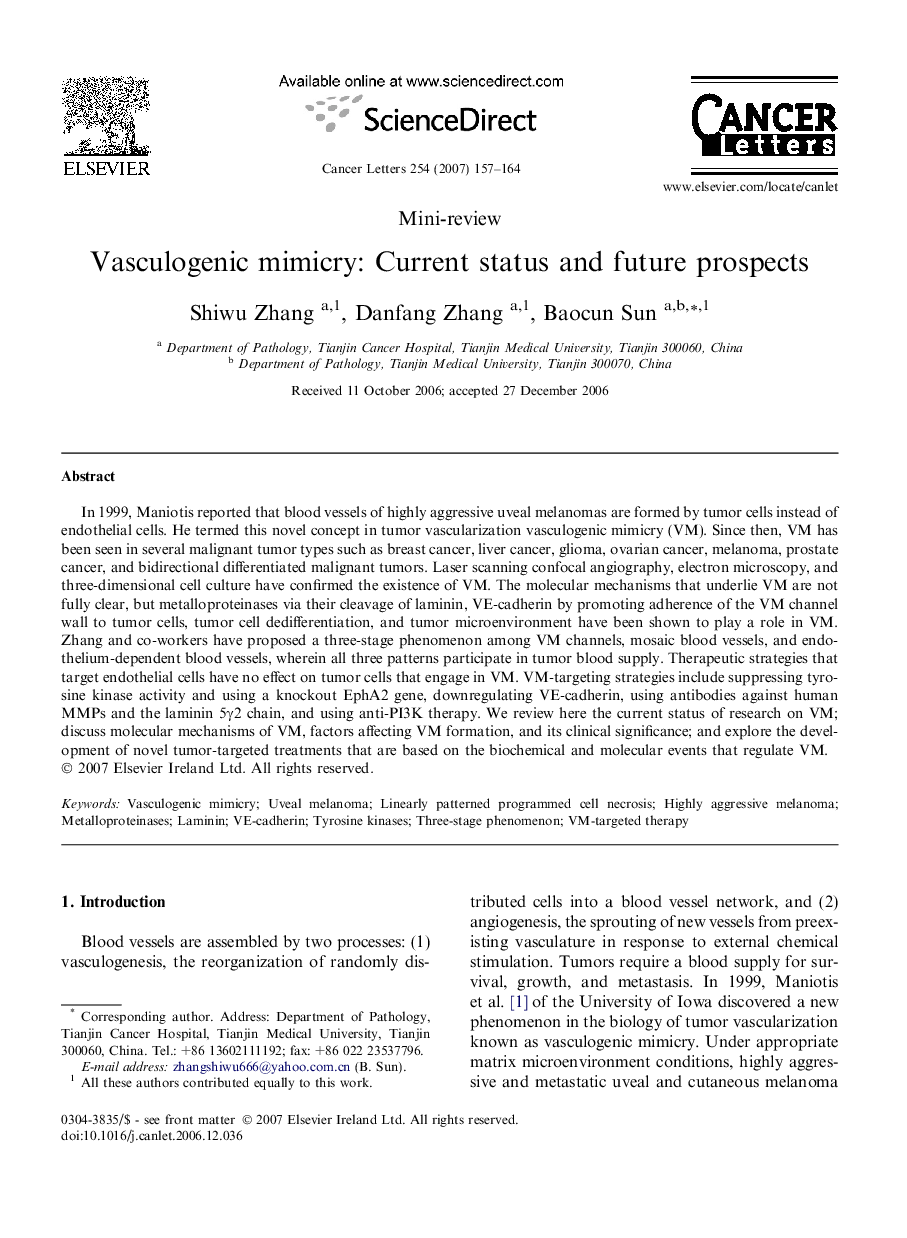| کد مقاله | کد نشریه | سال انتشار | مقاله انگلیسی | نسخه تمام متن |
|---|---|---|---|---|
| 2115094 | 1084575 | 2007 | 8 صفحه PDF | دانلود رایگان |

In 1999, Maniotis reported that blood vessels of highly aggressive uveal melanomas are formed by tumor cells instead of endothelial cells. He termed this novel concept in tumor vascularization vasculogenic mimicry (VM). Since then, VM has been seen in several malignant tumor types such as breast cancer, liver cancer, glioma, ovarian cancer, melanoma, prostate cancer, and bidirectional differentiated malignant tumors. Laser scanning confocal angiography, electron microscopy, and three-dimensional cell culture have confirmed the existence of VM. The molecular mechanisms that underlie VM are not fully clear, but metalloproteinases via their cleavage of laminin, VE-cadherin by promoting adherence of the VM channel wall to tumor cells, tumor cell dedifferentiation, and tumor microenvironment have been shown to play a role in VM. Zhang and co-workers have proposed a three-stage phenomenon among VM channels, mosaic blood vessels, and endothelium-dependent blood vessels, wherein all three patterns participate in tumor blood supply. Therapeutic strategies that target endothelial cells have no effect on tumor cells that engage in VM. VM-targeting strategies include suppressing tyrosine kinase activity and using a knockout EphA2 gene, downregulating VE-cadherin, using antibodies against human MMPs and the laminin 5γ2 chain, and using anti-PI3K therapy. We review here the current status of research on VM; discuss molecular mechanisms of VM, factors affecting VM formation, and its clinical significance; and explore the development of novel tumor-targeted treatments that are based on the biochemical and molecular events that regulate VM.
Journal: Cancer Letters - Volume 254, Issue 2, 8 September 2007, Pages 157–164